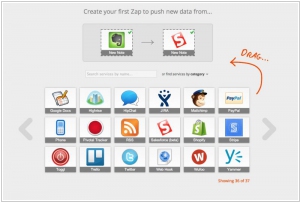IFTTT vs Zapier
May 27, 2023 | Author: Michael Stromann
6
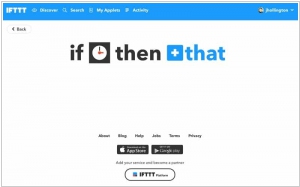
IFTTT is a service that lets you create powerful connections with one simple statement: If This Than That. Channels are the basic building blocks of IFTTT. Each Channel has its own Triggers and Actions. The this part of a Recipe is a Trigger. Some example Triggers are “I’m tagged in a photo on Facebook” or “I check in on Foursquare.” The that part of a Recipe is an Action. Some example Actions are “send me a text message” or “create a status message on Facebook.”
IFTTT (If This Then That) and Zapier are two popular automation platforms that enable users to connect and automate various web services and applications without the need for coding skills.
IFTTT offers a simple and user-friendly interface that allows users to create "applets" or automated workflows based on the "if this, then that" logic. It supports a wide range of services and devices, including social media platforms, smart home devices, and productivity tools. With IFTTT, users can trigger actions based on specific events or conditions, such as receiving an email, posting on social media, or detecting motion from a connected device.
Zapier, on the other hand, provides a more robust and feature-rich automation platform. It offers a vast library of pre-built integrations, known as "Zaps," that connect various applications and services. Zapier supports a wide range of triggers and actions, allowing users to create complex workflows and automations across multiple platforms. It also offers advanced features like multi-step workflows, filters, and data formatting options.
See also: Top 10 Cloud Integration software
IFTTT offers a simple and user-friendly interface that allows users to create "applets" or automated workflows based on the "if this, then that" logic. It supports a wide range of services and devices, including social media platforms, smart home devices, and productivity tools. With IFTTT, users can trigger actions based on specific events or conditions, such as receiving an email, posting on social media, or detecting motion from a connected device.
Zapier, on the other hand, provides a more robust and feature-rich automation platform. It offers a vast library of pre-built integrations, known as "Zaps," that connect various applications and services. Zapier supports a wide range of triggers and actions, allowing users to create complex workflows and automations across multiple platforms. It also offers advanced features like multi-step workflows, filters, and data formatting options.
See also: Top 10 Cloud Integration software
IFTTT vs Zapier in our news:
2023. Zapier launches Canvas, an AI-powered flowchart tool
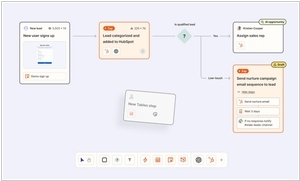
Zapier has unveiled Canvas, a innovative tool designed to assist users in planning and visualizing their crucial business processes. The tool combines intuitive visual diagramming features with AI capabilities to aid users in transforming their processes into Zapier-based automations. Canvas serves as a comprehensive platform where users can map out their processes from start to finish, and even modify the elements connected to Zapier directly within the interface. Notably, Zapier envisions expanding Canvas's functionality to allow users to edit any components, whether or not they are linked to Zapier, directly within the tool. In essence, Canvas functions as both a basic flowchart diagramming tool for process documentation and as an interface for editing the connected components. Additionally, Zapier has made Tables, its automation-focused database service, available to all users, further enhancing its automation capabilities.
2021. Zapier buys no-code-focused Makerpad
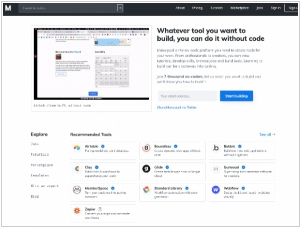
Zapier, a renowned no-code automation tool, has acquired Makerpad, an educational service and community focused on no-code development. The no-code sector, along with its related field of low-code development, has been vibrant in recent times. The low-code market has witnessed significant funding rounds, with some companies adopting low-code tools to expedite internal software development. In the no-code realm, Zapier stands as a notable success with its impressive revenue figures reaching nine digits.
2018. IFTTT raised $24M from Salesforce
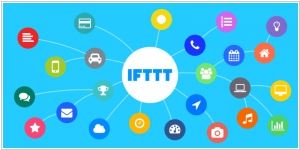
IFTTT, the cloud integration service, has secured an additional $24 million in funding to expand its operations further into domains like enterprise and IoT services. Currently, IFTTT boasts a user base of 14 million registered consumers. Notable companies such as Google, Microsoft, Amazon, Twitter, BMW, Samsung, IBM, MyQ, and Verizon have all benefited from IFTTT's scripts. Despite facing competition, IFTTT has experienced growth by focusing on niche actions between applications and devices. These actions are often created by both platform users and companies themselves, filling gaps that may not be addressed elsewhere due to companies not having direct integrations or the actions being highly specific in nature.
2017. Zapier added shared folders for teams
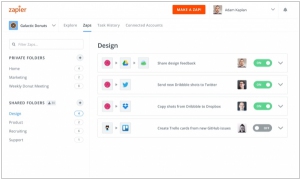
The cloud app integration service Zapier has introduced shared folders, enabling teams to collaborate and automate tasks collectively. These shared folders facilitate access to a shared collection of Zaps, allowing teammates to collaborate and construct more robust workflows. With an individual Zapier account, users can create automated workflows called Zaps that connect multiple apps. However, until now, it was not possible to share these innovative workflows with colleagues. Shared folders eliminate this limitation by enabling collaboration. Anyone with access to a shared folder can modify and enhance the Zaps within it, or even duplicate them for their own utilization. Furthermore, we have incorporated an option to share accounts for other tools, such as Dropbox, Pipedrive, and Typeform. This eliminates the need to create separate logins for each team member.
2017. Zapier launched team accounts
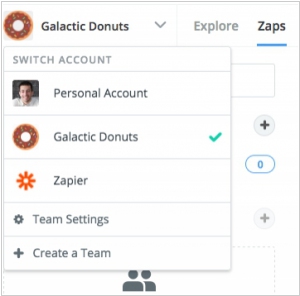
Zapier, a platform that specializes in connecting applications and automating workflows, has introduced a new offering called Zapier for Teams. This plan, priced at $250 per month, complements Zapier's existing free and $20/month tiers and incorporates several collaborative features into the service. With Zapier for Teams, businesses can now grant their employees access to Zapier while managing a single consolidated bill. The implementation of this plan also enhances security measures by allowing companies to easily add and remove user accounts as needed. Previously, under Zapier's previous pricing tiers, employees would often resort to sharing passwords, which was far from an ideal solution. With Zapier for Teams, companies can foster improved security practices and enjoy the benefits of streamlined collaboration within their organization.

